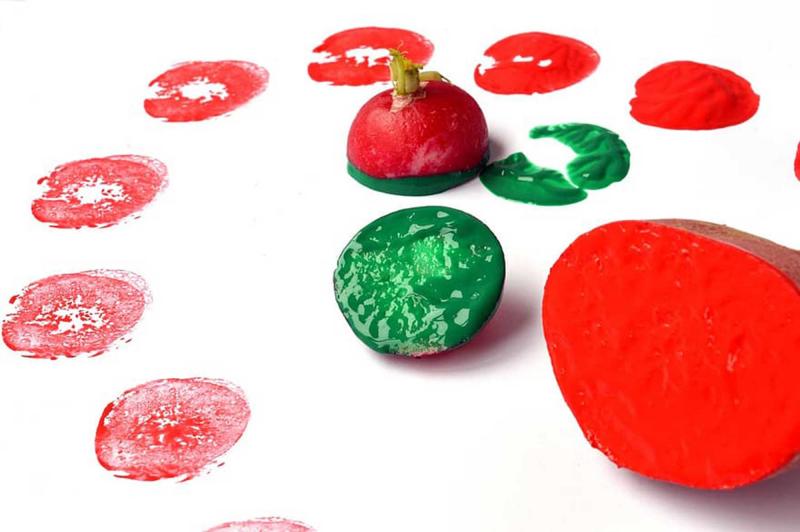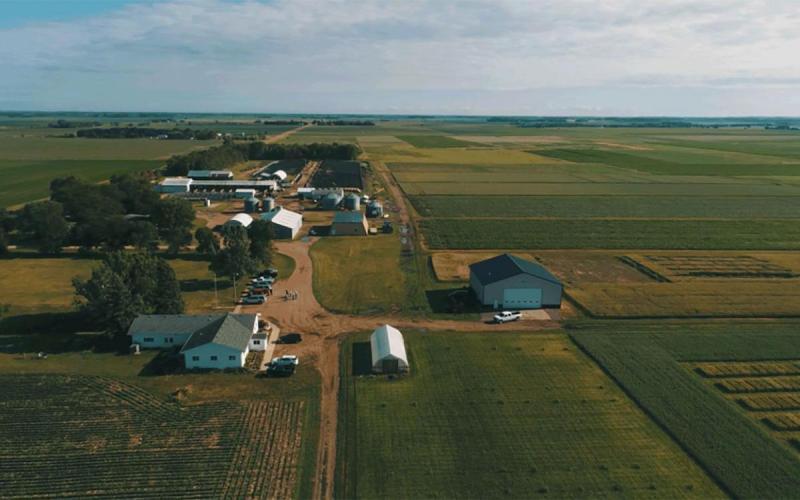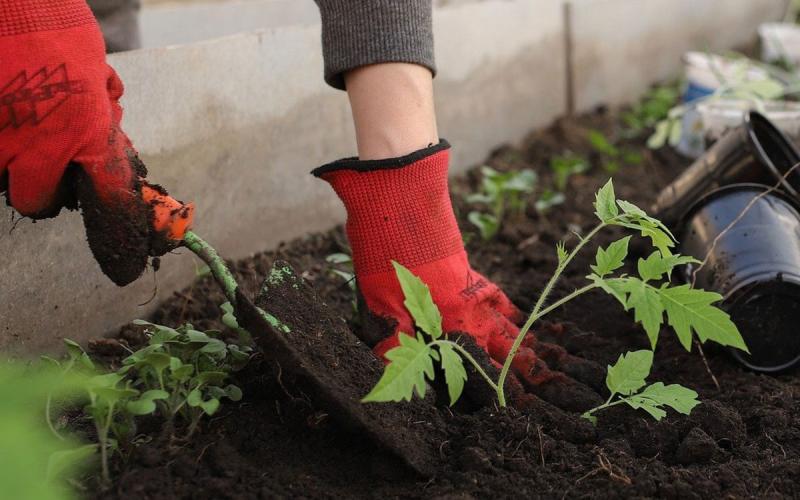Lesson Overview

Lesson developed by Lisa Gabriel under the direction and review of Anna Barr and Aimee House Ladonski.
Objective
At the completion of this lesson, learners will be able to identify root and non-root fruits and vegetables and learn harvesting skills.
Vocabulary
- Read and learn these words.
- Harvest: The gathering of ripe crops, the amount of crops gathered, or the season they are gathered.
- Produce: Things made or grown in order to be sold, especially fresh fruit and vegetables.
- Vegetables: Leaves, stems, roots, or other parts of certain plants that people eat.
- Root Vegetables: Roots of plants that are eaten, including: carrots, radish, beets, turnips and sweet potato.
- Leaf Vegetables: Plant leaves eaten as a vegetable, including: lettuce, cabbage and spinach.
- Stems: Plant part that is eaten, including: asparagus, celery and wheat.
- Flowers: Plant part that is eaten, including broccoli and cauliflower.
- Fruit: The part of a plant that has seeds or flesh, including: apples, tomatoes, green peppers, pumpkin, peaches, cucumbers and lemon.
- Seeds: Plant part that is eaten, including: coffee beans, peanuts, peas and corn.
- Learning Activity: Help your child learn these vocabulary words by asking them to draw a picture of each word and then describe the picture to you.
Resources and Activities
Video
Kids in the Garden - Summer Harvest: Watch this video to see carrots, zucchini and beans being harvested and to learn tips to increase your yield when harvesting zucchini and beans. Try to identify each vegetable when it is harvested! Courtesy of Learn To Grow.
- Video follow-up questions:
- Did you see any root vegetables in this video?
- Do you think beans are harvested in the middle, like corn from the book "Tops and Bottoms?"
Book
Tops and Bottoms: Watch and listen to this book by Janet Stevens. This book is very different. Instead of reading from side to side, you read from top to bottom! During the book, try to come up with ways to help Bear prepare foods with the plant parts he gets from Hare! Courtesy of StoryTime at Awnie's House.
- Book follow-up questions:
- Did you notice that the crops Hare planted were harvested in different ways?
- Which crops where harvested by digging them up?
- Which crops were harvested above the ground?
- Remember sometimes we eat root vegetables and sometimes we eat the flower, stem, leaf or seed from the crops we plant. Can you think of some other fruits and vegetables that Bear and Hare could plant together to share and eat?

Harvest Activity
Harvest Helper Grab Bag:
- You will need:
- Carrot
- Radish
- Beet
- Broccoli
- Lettuce
- Celery
- Corn on the cob
- Large paper bag
- Note: You may also use other fruits or vegetables you have on hand or printable flashcards.
- Instructions:
- Gather materials by harvesting them from your garden, printing images of the foods, or buying them from your local grocery store or farmers market. Consider having your child engaged in the harvesting or shopping process. One idea is to have them write or draw the grocery list.
- Place all the produce (or images) into the paper bag.
- Ask your child to reach into the paper bag and identify what vegetable they have picked using their sense of touch before pulling it out of the bag to look at it. Allow them to peek if they are struggling. If using pictures, ask them to identify the vegetable by sight.
- To make this activity more challenging, ask your child to identify each item as a flower, stem, leaf, seed or root.

Nutrition Activity
Tops and Bottoms Popsicles: In this healthy recipe, families create a "Tops and Bottoms" popsicle (Orange Carrot Mint or Strawberry Beet Basil), including a fruit, root and leaf part of plants. Recipe courtesy of FoodCorps.

Art Activity
Harvest Prints: In this activity, your child will use fruits and vegetables to make prints. View this example video courtesy of BabyCenter to learn how!
- Materials needed:
- Assorted fruits or veggies (Tip: apples are fun to show the star-shape when you cut them through the middle)
- Knife and cutting board
- Paint and paint containers
- Construction paper
- Instructions:
- Cut the fruits and vegetables into different shapes.
- Dip the fruits and vegetables in various paint colors.
- Stamp the paint-dipped vegetables onto construction paper to create art!
Adults, Learn More
- Harvesting and storing home garden vegetables: Learn how to pick, store and savor your vegetables. Courtesy of University of Minnesota Extension.
- Growing Your Own Food: Learn how to grow your own food at home, whether it’s a few containers on your deck or a more-ambitious vegetable garden. Courtesy of SDSU Extension.
- Master Gardeners: Learn more about SDSU Extension’s Master Gardener program.
Project Contributors
Lesson Author:
- Lisa Gabriel
Other Contributors:
- Shelby Anderson
- Paulette Morse
- Ruth Smith


